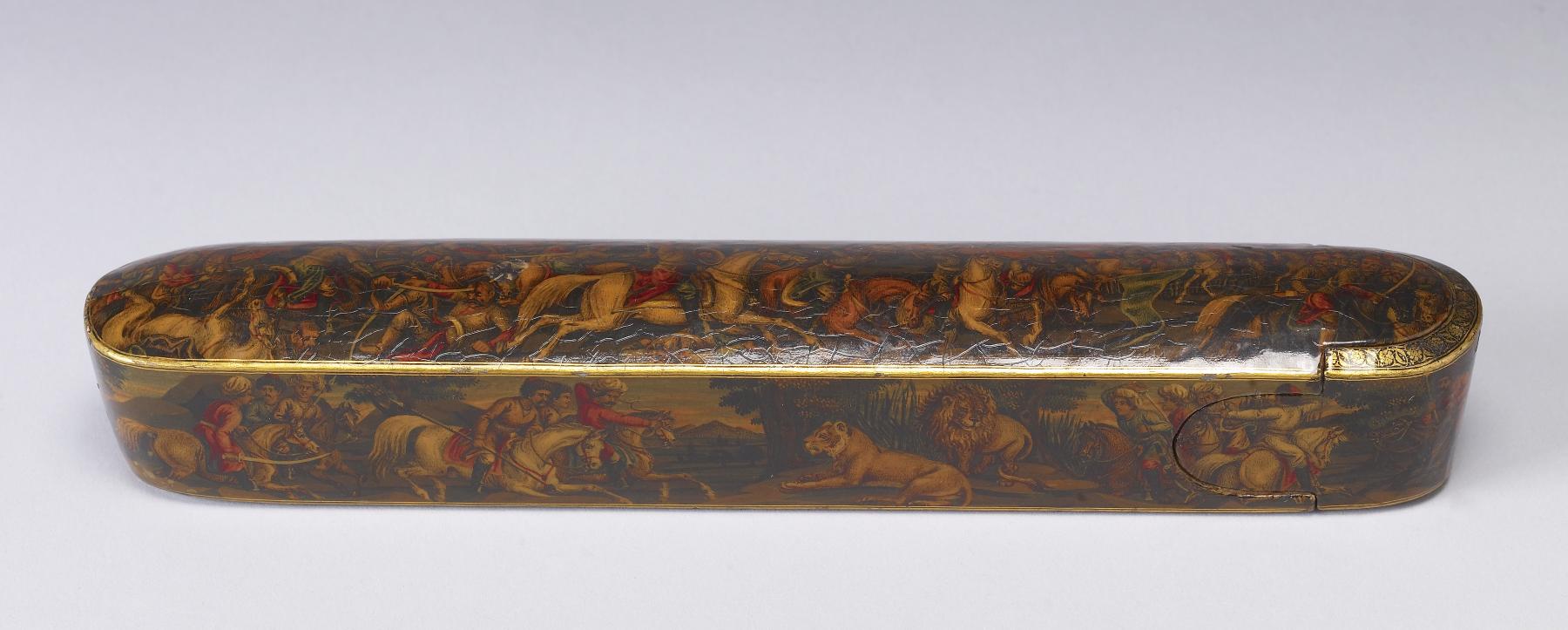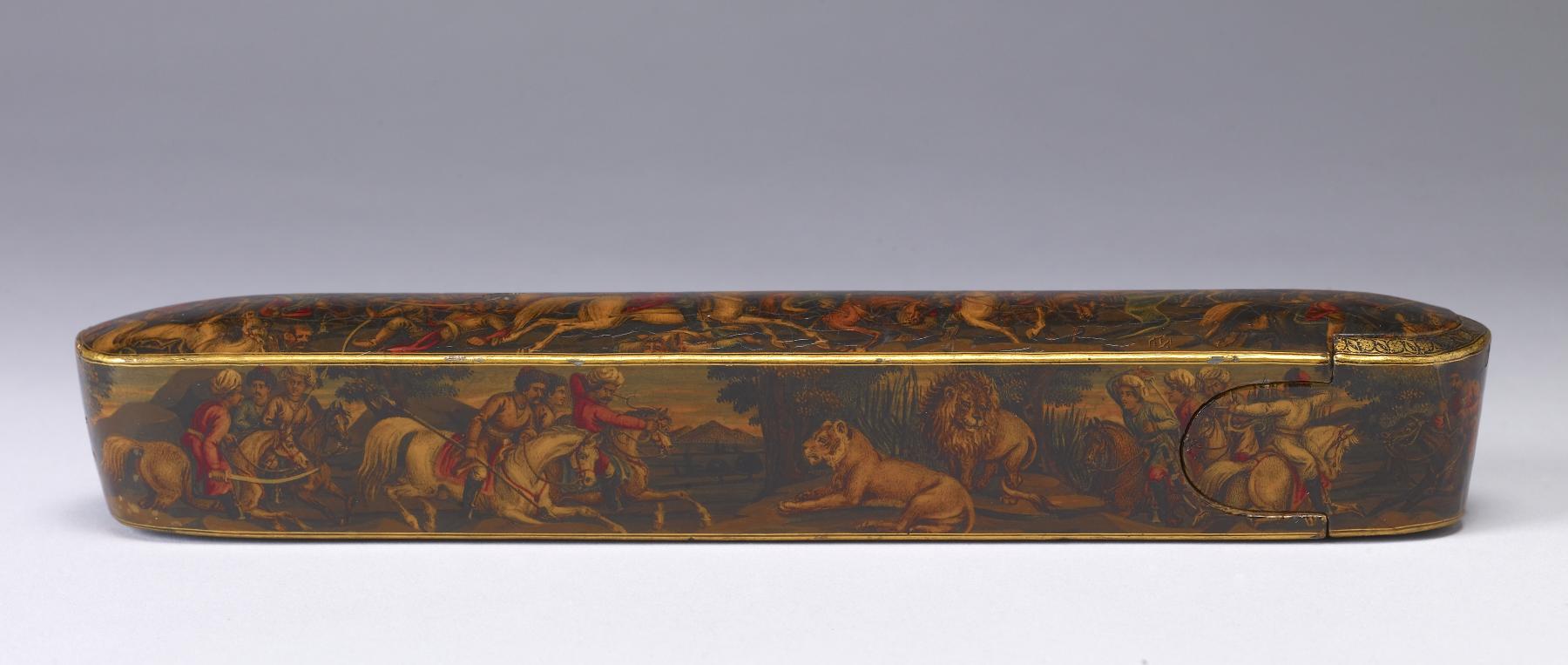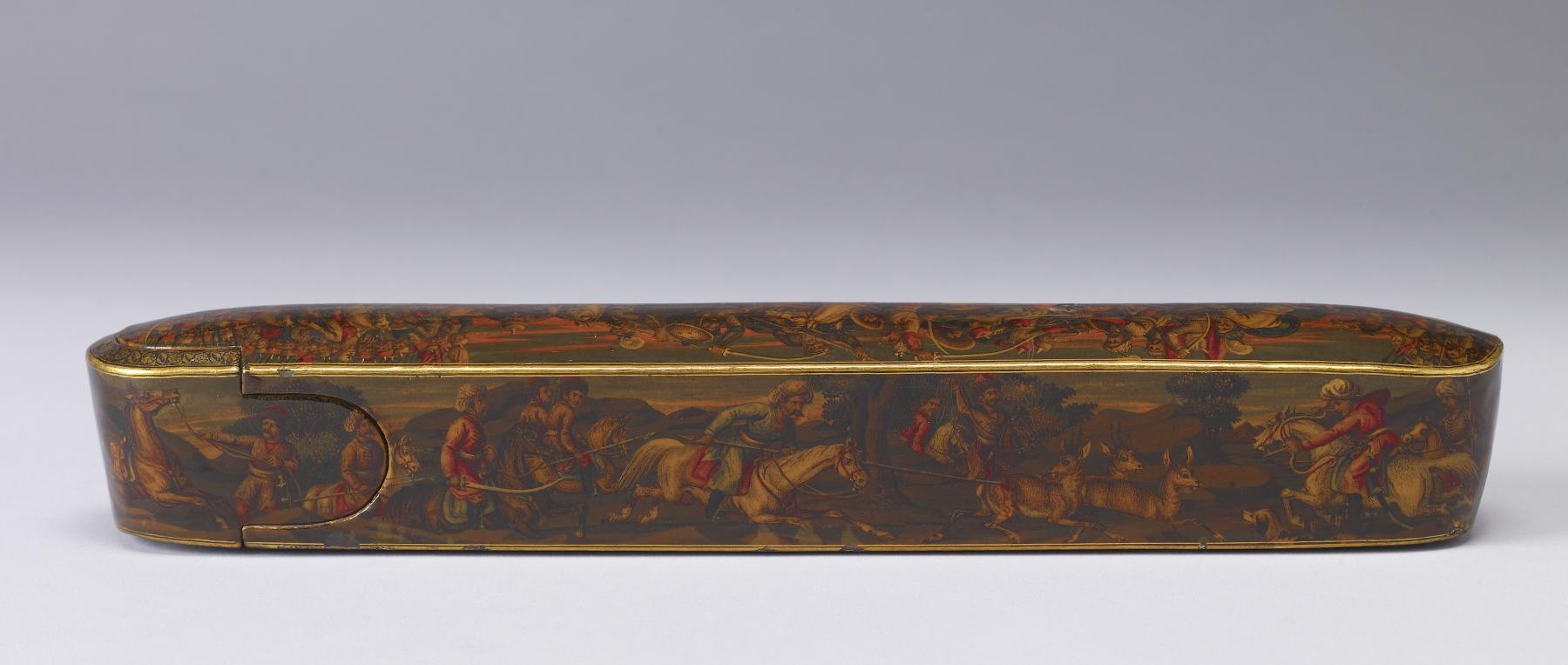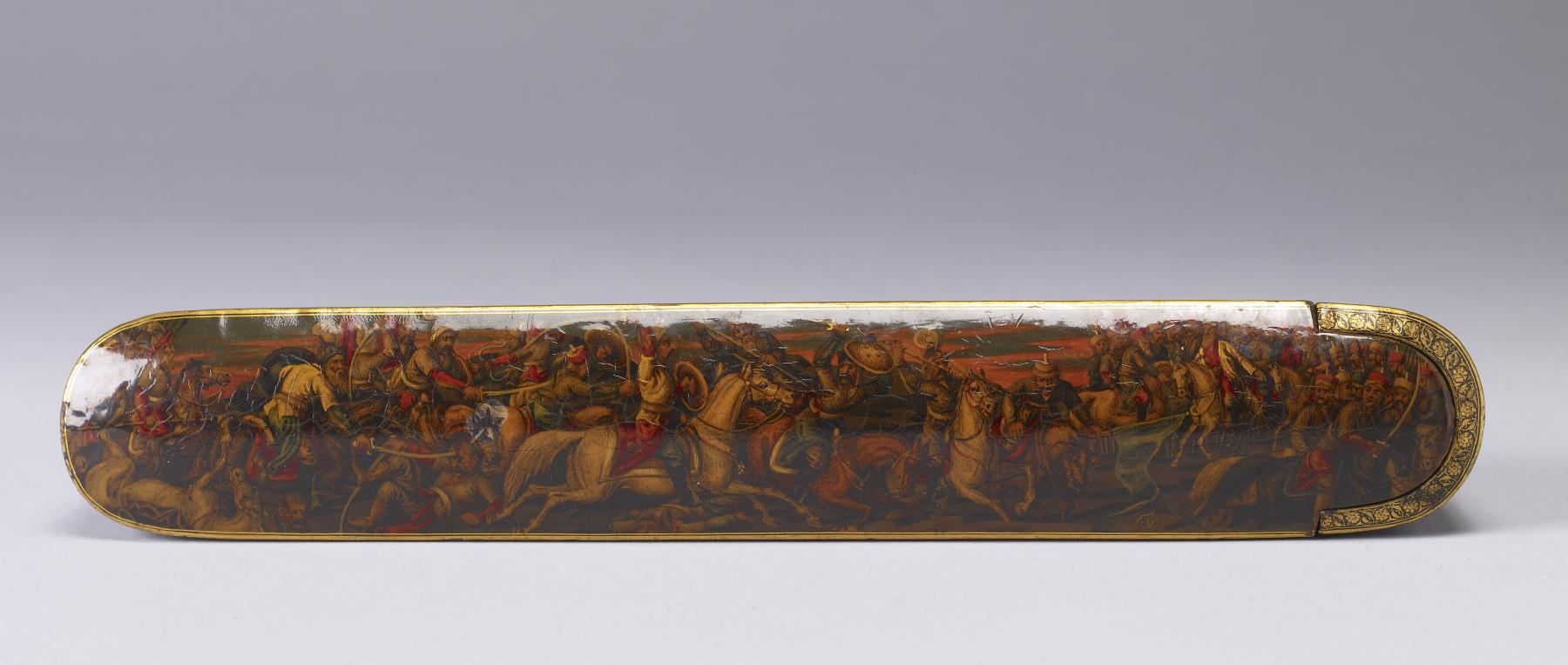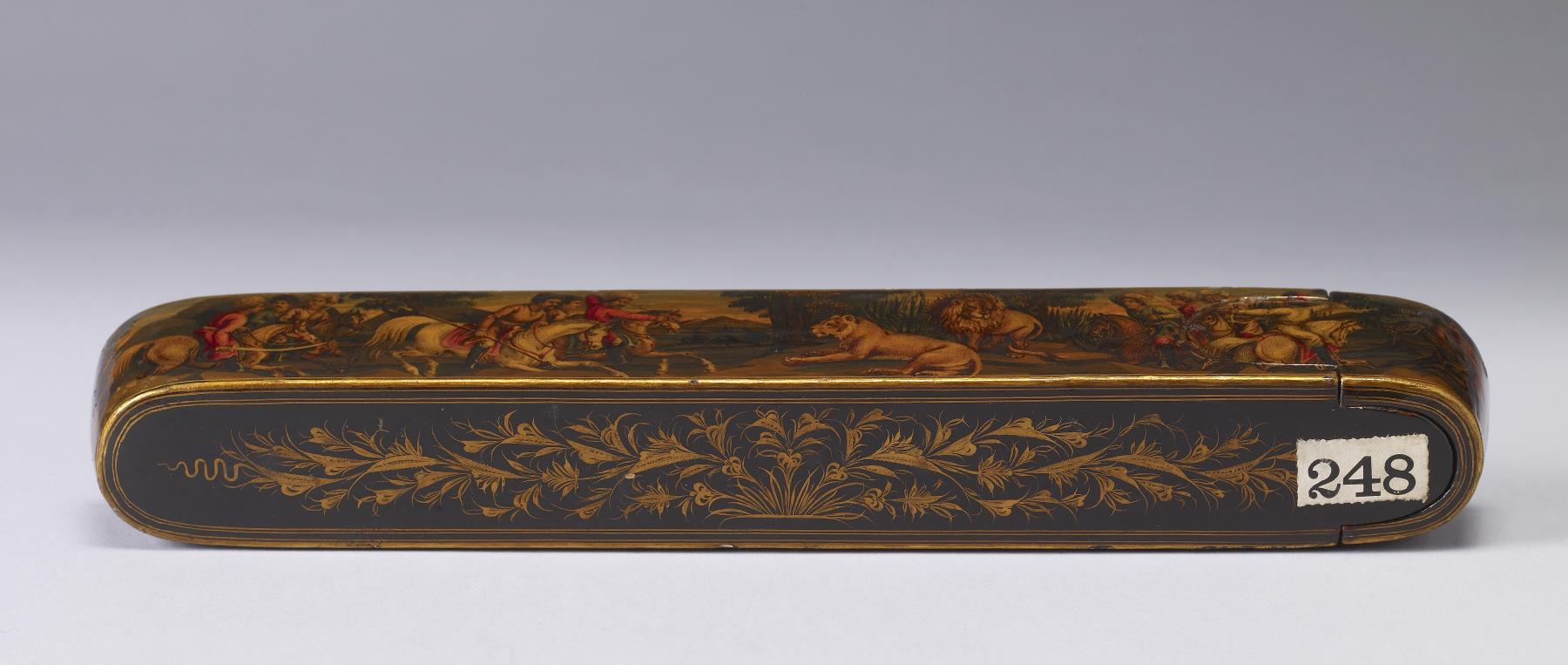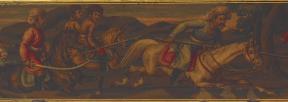Pen Box with Battle Scenes
(Islamic World )
This form of pen box, with a drawer-like compartment that slides out to reveal its contents, was invented around the middle of the 17th century. Its ingenuity lies in the fact that it can be held closed without chains or a lock. The mouth of the sliding compartment was often elaborately carved to fit exactly into the body of the case, so that in Persian it is referred to as the qufl, or lock. The medium of this form was commonly papier mâché (pasteboard) on wooden or iron molds, although sometimes pen boxes were also produced in ivory.
Provenance
Provenance (from the French provenir, 'to come from/forth') is the chronology of the ownership, custody, or location of a historical object. Learn more about provenance at the Walters.
Acquired by Henry Walters, Baltimore; by bequest to Walters Art Museum, 1931.
Exhibitions
| 2015-2016 | Pearls on a String: Artists, Patrons, and Poets at the Great Islamic Courts. The Walters Art Museum, Baltimore; Asian Art Museum, San Francisco. |
| 2011 | The Art of Writing Instruments from Paris to Persia. |
Conservation
| Date | Description | Narrative |
|---|---|---|
| Examination | Examined | |
| Examination | Examined in preparation for exhibition. |
Geographies
Iran (Place of Origin)
Measurements
H: 1 1/2 ×L: 9 × W: 1 7/16 in. (3.8 × 22.9 × 3.7 cm)
Credit Line
Acquired by Henry Walters
Location in Museum
Not on view
Accession Number
In libraries, galleries, museums, and archives, an accession number is a unique identifier assigned to each object in the collection.
In libraries, galleries, museums, and archives, an accession number is a unique identifier assigned to each object in the collection.
67.6

